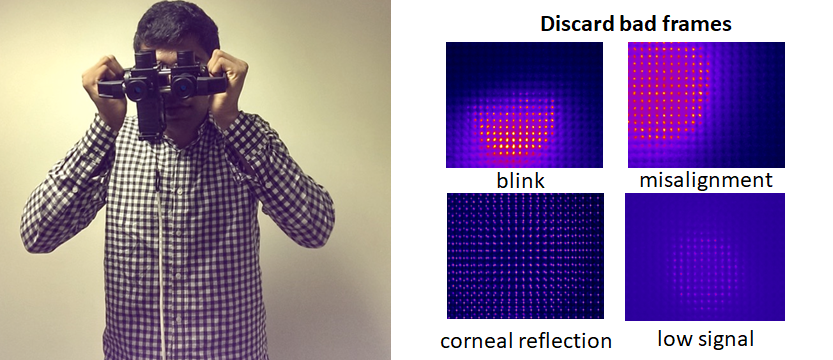Visual acuity evaluation with refractions prescribed by a novel low-cost wavefront aberrometer

| AUTHORS | |
| JOURNAL | Investigative Ophthalmology & Visual Science, Vol.56,Issue 7, June 2015. ARVO Annual Meeting |
| ABSTRACT | Purpose: To compare the visual acuity (VA) resulting from eyeglasses prescribed by a novel autorefractor and by subjective refraction. Methods: A total of 81 eyes from 42 patients (mean age 38 ± 13yrs, ametropia range -6.25 to +4.5D spherical equivalent power (SE)) were refracted and their VA tested in a clinical setting (Fundacion Jimenez Diaz, Madrid). Refractions were obtained following a standard non-cycloplegic subjective method and with a second generation autorefractor prototype which is handheld, open-view and binocular. This device is based on a simplified approach to wavefront sensing that does not use a Badal relay lens system. The autorefractor is composed of inexpensive off-the-shelf parts including a 1.3-MP CMOS sensor, a 19-mm focal length lenslet array and an 850-nm laser diode. The subjects hold and look through the device while a dynamic sequence of wavefront images is acquired. This dataset is processed using a custom-developed algorithm that tracks patient-device alignment and accommodation to generate a set of measurements from which the prescription is calculated. Three 10-s videos were recorded for each eye and the results of the two last measurements were averaged to calculate the refraction. VA was measured for prescriptions provided by each method and differences between refraction measurements and VA achieved in each case were evaluated.Results: The average difference between SE measured subjectively and with the prototype was 0.32 ± 0.35D. Refractions obtained from either method were not statistically different (p= 0.96, paired t-test) with a 95% confidence interval of ± 1.0D. The spherical power measured subjectively and with the prototype agreed within 0.25D and 0.5D in 60.5% and 79.0% of the eyes, respectively, while the cylindrical power agreed in 84.0% and 96.4% of the cases for the same thresholds. The average VA achieved with the device and by subjective prescriptions was of 0.000 ± 0.067 and -0.012 ± 0.035 logMar, respectively. Using the prototype refraction, 81.5% of the eyes achieved VA ≥ 20/20 and 98.7% ≥ 20/25.Conclusions: The new prototype provided accurate measurements of refractive errors in a community optometry clinic. Average discrepancies between VA achieved with the device and subjective refraction were smaller than 0.02 logMar (one letter). A low-cost device, such as the one evaluated here, may be beneficial for improving eye care in low-resource settings. |
| LINK | http://iovs.arvojournals.org/ |



